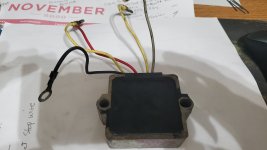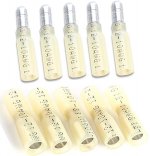Hi,
Went to the launch and my boat wouldn't start after a previous day of fishing. No spark.
Ordered a new switchbox, trigger and stator not knowing which would be the culprit. Once the switchbox was replaced the engine fired right up so returned the trigger and stator.
Next trip the engine wouldn't start at the end of the day--got towed in. Again, no spark. Ordered another switchbox and installed and still no spark.
The first replacement had two red wires where my original had only one. The first replacement came with a splice for both of the red wires to be connected to my one red wire on the engine. On inspection you could tell the red wire splice overheated and so did one of yellow wires. I was sure that the first replacement switchbox burned up and the 2nd replacement would work. It does not. I did not hook up the extra red wire.
Could there be something else? I find it odd that replacing the switchbox worked the first time--again, it immediately fired up and ran for a day--and now it doesn't. Could something else have failed due to the two red wires being connected instead of just one?
There is power to the switchbox.
Went to the launch and my boat wouldn't start after a previous day of fishing. No spark.
Ordered a new switchbox, trigger and stator not knowing which would be the culprit. Once the switchbox was replaced the engine fired right up so returned the trigger and stator.
Next trip the engine wouldn't start at the end of the day--got towed in. Again, no spark. Ordered another switchbox and installed and still no spark.
The first replacement had two red wires where my original had only one. The first replacement came with a splice for both of the red wires to be connected to my one red wire on the engine. On inspection you could tell the red wire splice overheated and so did one of yellow wires. I was sure that the first replacement switchbox burned up and the 2nd replacement would work. It does not. I did not hook up the extra red wire.
Could there be something else? I find it odd that replacing the switchbox worked the first time--again, it immediately fired up and ran for a day--and now it doesn't. Could something else have failed due to the two red wires being connected instead of just one?
There is power to the switchbox.





















